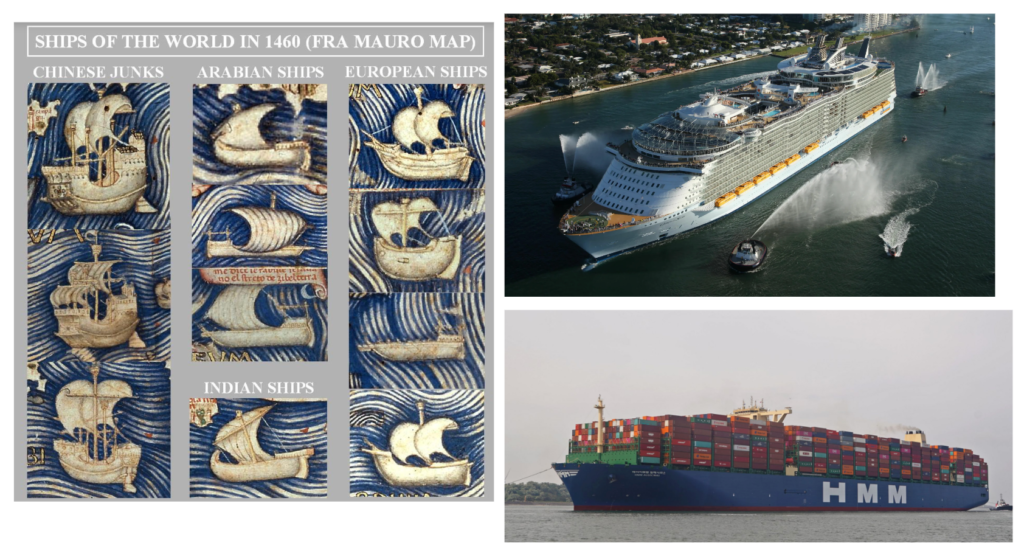
In the XIV-XV centuries, according to many researchers, China had a fleet of the largest ships in history, which significantly exceeded the size of European, and all other, ships of that time. These giant junks, part of the Ming Dynasty navy, played a key role in maritime expansion and trade.
The most famous are the ships of the flotilla of Admiral Zheng He, who became famous for his long voyages at the beginning of the 15th century (1405-1433). According to various estimates (by the way, sometimes contradictory to each other), the size of his flagship ship could reach 137 meters in length and 56 meters in width. These ships were equipped with nine masts and could carry up to 1,500 people, including crew and soldiers.
Compare this to the largest European ships of the time. European ships of the 14th and 15th centuries were much smaller and less technologically advanced. The main types of ships included caravels and caracas. Caravels were the main ships for exploration and trade. Carracks, as a rule, were larger, but still significantly inferior to Chinese junks in size and capacity.
For example, Christopher Columbus’s flagship caravel, the Santa Maria, was only about 25 meters long and 8 meters wide. Even later, in the 16th century, the galleons of Spain, which were considered the largest ships of their time, reached a length of about 40-50 meters.
Also, for comparison with modern ships: The largest ocean liners, such as “Oasis of the Seas” and “Icon of the Seas”, are about 360 and 365 meters long, can carry more than 6000-7500 passengers. Modern cargo container ships, such as the Emma Maersk, are about 400 meters long and can carry up to 15,000 containers.
Accordingly, if historical data is true, then Zheng He’s flagship 600 years ago was more than half the size of the giant liner “Oasis of the Sea” (shown in the picture for the post). This seems fantastic – and many historians believe that estimates of the size of the ships are exaggerated by one and a half, or even two times (after all, there were no modern materials and technologies that make it possible to create durable hulls). Even if this is so, the size still greatly exceeded the European and especially American (Mesoamerican – before the arrival of Europeans on the continent) and Polynesian ships of that time.
Zheng He’s ships were not only impressive in size, but also played an important role in China’s diplomatic and trade missions. Between 1405 and 1433, Admiral Zheng He made seven major expeditions, reaching the shores of Southeast Asia, India, Arabia and even East Africa. These expeditions helped establish Chinese influence and expand trade in the region.
So, Chinese ships of the 14th-15th centuries amaze with their size and technological achievements, and in comparison with European ships of that time, Chinese junks represented, as one might assume, the pinnacle of engineering and naval architecture. It is significant that China itself deprived itself of supremacy at sea, deciding to stop exploring the outside world and essentially destroying its own large-capacity fleet after the voyages of Admiral Zheng He. In Europe, at this time, the Age of Great Geographical Discovery was just beginning.
Interestingly, modern China has once again become the leading global shipbuilder, 600 years later, and once again the most impressive ships in the world. Since about 2010, China has overtaken the leading shipbuilding countries until then – South Korea and Japan – and then only increased the pace. Today, in terms of carrying capacity (deadweight) of ships launched, China produces about 60% of all new ships in the world.
***
My book “The role of a CFO: Motivating people, managing assets and hedging risks”